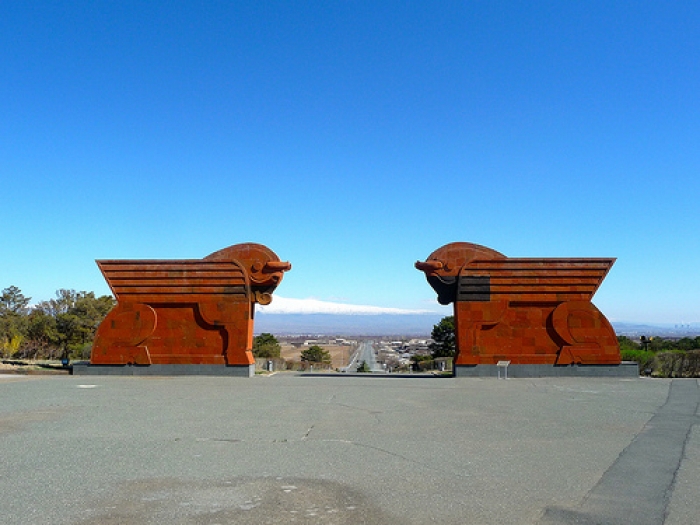Ughtasar
Mount Ughtasar is a high mountain pass of the Ishkanasar range in the Syunik Province at an elevation of 3,296 m. It's only possible to reach this site by four-wheel drive in good weather (best time is between July-August).
The track is 17km long, climbing 1,400m from the nearest settlement, and requires a 4x4. It takes about 90 minutes to drive to the site from Sisian although the last 500m has to be walked as the vehicle cannot make the steep ascent when fully laden. Mount Ughtasar can be reached following car tracks, which can be barely visible at times, for 15 km up to an altitude of 3,000 m. You then need to walk the remaining 500 m to the petroglyph field. The trip can be undertaken only in July and August, during good weather conditions. An experienced driver and guide are necessary to reach the site, and explain the most interesting designs.
Aside from the natural beauty of the mountaintop valley, the views and the small lake, there is an abundance of ancient petroglyphs which are between four and seven thousand years old. Rock—carvings are a unique source for the study of ancient culture. Discovered on the territory of Armenia, they have been know as "Itsagir", i.e., goat-letters, and though they attracted the attention of certain investigators at the beginning of the 20th century, they were not studied at that time. Interest in rock art monuments grew during the first decades of the 20th century, when A. Kalantar indulged himself in their study.
The study of these rock-carvings is possible only during summer months. Most of the time, nearly nine months of the year, the rocks are thickly covered with snow. The rock carvings are mostly on "tombstones," and these decorated rock-fragments are scattered at the feet of mountains, in valleys including the slopes and bottom of Ughtasar, which took its name after the resemblance it has with the camel ("ught" in Armenian means "camel"). The carvings are graphic and voluminous and have been represented horizontally or vertically on the flat, brown and black rock—fragments.









